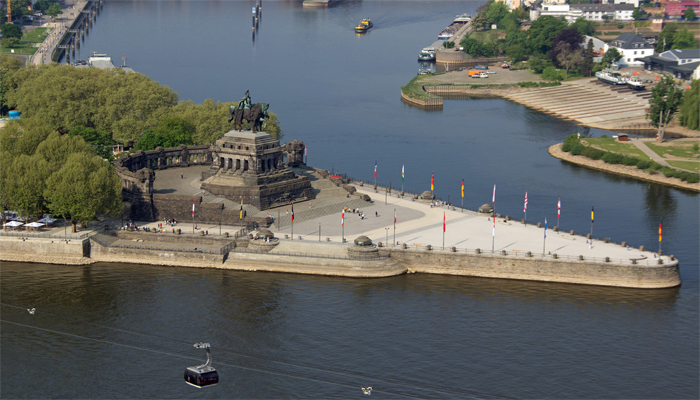
St.Goar, Koblenz & Heidelberg
We boarded the KD cruises which offers daily service and arrived into St. Goar in around 1 hour 40 minutes crossingen route the wonderful towns of Bingen, Assmanhausen, Lorch and Bacharach.
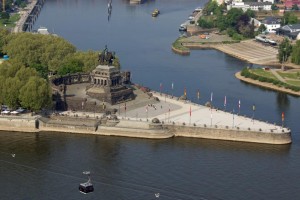
En route to St. Goar we were able to see some stunning castles such as the Stahleck Castle, a 12th Century castle near Bacharach, built on the orders of the Archbishop of Cologne andoverlooking the Rhine and Loreley valley. It was destroyed in the late 17th Century and later built in the early 20th Century and is now a hotel.
As we sailed along, we arrived at the most photographed castle on the Rhine – the Pfalz Castle. This castle, built in the 13th Century on the river bed near the town of Kaub, was an ancient toll booth of sorts and made the town of Kaub one of the wealthiest on the river along with the Gutenfels Castle, which is now a hotel.
Next, we passed the Schönburg Castle, now a famous hotel but once called the most beautiful refuge of Rhine Romanticism.
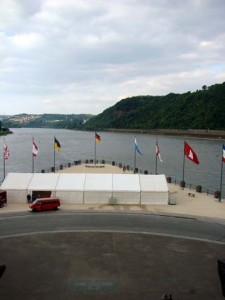
Onwards we cruised along to the region of Loreley – a 433 feet high slate cliff near the town of St.Goar where we were to disembark and spend a couple of hours in this town of the Rheinfels Castle – the largest and most imposing castle on the Rhine. On arrival we boarded the Castle Express which took us up to the Rheinfels Castle from the town centre.
The town of St. Goar was named after the Saint, who built a chapel and lived as a hermit during the 6th Century on the site of the Stiftskirche or the Collegiate Church today. The town is worth exploring and the good news for our Indian guests is – you can get Indian food here.Not too far from St. Goar is Oberwesel which is merely 14 kilometres away and is also an exciting holiday destination.
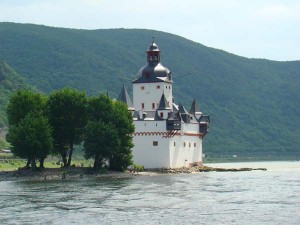
We boarded the KD cruise to head towards the last leg of our Rhine cruise and on to Koblenz where we were to be a part of the Romantic Rhine route with a wide range of castles along the way. As the cruise boat started off from St. Goar, on the other side of the Rhine, at a distance was the Cat Castle situated on a rocky mountain, now a privately owned property. Further down there was the imposing Stolzenfels Castle which was built by Karl Friedrich as a 19th Century palace as an epitome of Rhine Romanticism. We came across a building called Königsbacher,a brewery that makes beer, situated close to Koblenz that sells its products to chains of stores and supermarkets across Germany.
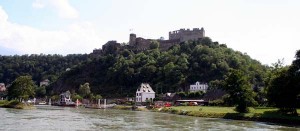
In Koblenz,we first walked to the German Corner which has an imposing statue of Emperor Wilhelm. The “Deutsch Eck” or the German Corner is where the Rhine and Moselle rivers meet at one of Germany’s very picturesque cities. Koblenz is famous for its fine wines from the vineyards that slope along the Moselle and is a city which has an interesting history of Empress Augusta in whose name a special Festival is celebrated every year. Koblenz is a city of lovers of music, art and theatre and is home to several museums, art galleries and exhibitions. The 34 kilometre long promenade along the banks of the Rhine and the green areas of the city make it worthwhile to spend a night to explore the wine, castles and the old town of Koblenz.
We returned to Frankfurt the same evening as we were heading to the region of Baden Würrttemberg and one of the southernmost cities located at close proximity to the borders of France and Switzerland – Freiburg, on the western edge of the Black Forest.
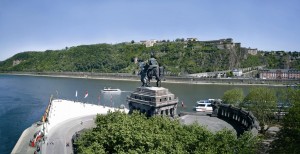
The following morning we boarded our train for Freiburg and en route we stopped at the University town of Heidelberg, famous for its castle, the old quarter and also for being Germany’s oldest University town.
We started our tour from Löwenbrunnen – the Lion Fountain close to the University Square. Heidelberg has been an inspiration for artists, poets, writers and composers and is the centre of Romanticism and is a must visit for the honeymooner not only for its stunning beauty, the youthful town and its cosmopolitan flavour but also for the Café Knösel which has an interesting story of Heidelberg Student’s Kiss.
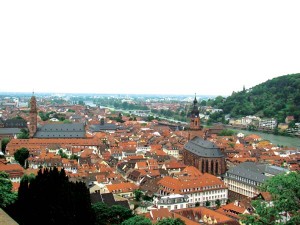
We started our tour with the oldest University of Germany – the Ruprecht Karl University of Heidelberg which was founded in 1386 when Heidelberg was a little fishing village. We had the opportunity to visit the Students’ Prison which is located at the back of the Old University and a prison where the students loved to go.
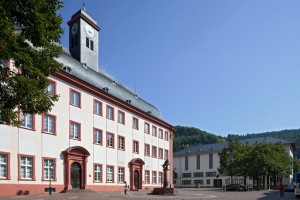
The prison, which was operational until 1914, was a place where students were punished for common offences like disturbing the peace or excessive drinking at night, insulting official authorities and so on. In fact during those days no one wanted to leave Heidelberg University until they spent a few days in the Students’ Prison. The only restriction was that the prison was for young men only and not for girls studying at the University.
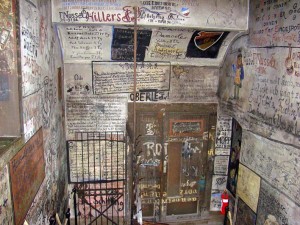
Next we visited the impressive University Lecture Hall. Special lectures and graduation ceremonies are conducted here even today. The hall is in Neo-Renaissance style and it did not surprise us that the University is associated with over 29 Nobel Prize Laureates and is consistently ranked amongst Europe’s top Universities and for those pursuing their Ph. D.
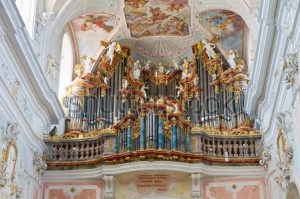
Next we stopped to see the impressive Catholic Baroque Church which was recently repainted white. The next stop was at Heidelberg’s most famous building that Louis XIV didn’t destroy.



